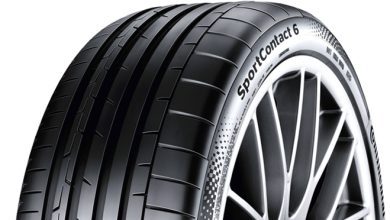Understanding Bike Engine Oil Colors: What Does Each Shade Mean?
A Quick Guide To Engine Oil Colors

Summary: This article depicts the vital role that engine oil plays in the life of your motorcycle. But many riders do not realise that engine oil doesn’t merely perform its duties silently; it communicates through the colours it wears. So, by the end, you’ll understand the shades of your bike’s vital fluid and ensure that your motorcycle continues to provide the service you deserve.
Oil is the lifeblood of your bike engine. It keeps the engines roaring and pistons pumping tirelessly, ensuring a smooth ride and exhilarating experience. But here’s a little secret—bike engine oil doesn’t just perform its duty quietly; it depicts a lot through the colours it wears.
“All colours are the smiles of nature.” – Isaac Newton. However, vehicles discussing motorcycle oil colours speak different languages, one that reveals the health and vitality of your two-wheeled companion. Just as the changing shades of leaves signal the season transitions, the evolution of engine oil colours impacts wear, tear, and maintenance.
So, dear rider, wear your helmet, adjust your mirrors, and dive deep to learn about engine oil colours and their benefits. By the end of this article, you’ll be able to distinguish the shades of your bike’s vital fluid and ensure that your motorcycle keeps running on the open road.
The Complete Manual on Bike Engine Oil Coloration
Fusion of many oil colours can form a rainbow, but in bikes, it’s variations of black and brown. Engine oil plays a beneficial role to optimise your motorcycle’s performance and its colour offers valuable insights into its condition. So, let’s take a look at the importance of different bike engine oil colours, from amber to black.

Quick Reference Guide to Bike Engine Oil Colors
Here’s a quick overview of what different motorcycle engine oil colours mean:
-
Amber in Colour: The Sign of Freshness
Amber-coloured engine oil is the best and top-rated standard when it comes to fresh oil. Therefore, when you change the motorcycle’s oil, check its colour. If it’s not amber in colour, it’s necessary to completely drain out the old oil. Here’s what you must know:
- Amber colour displays that the engine oil is new and in superior condition.
- Fresh, amber-coloured oil is clean and provides optimal lubrication for your engine components.
If your bike’s engine oil is amber, don’t worry your engine is fine and ready for action.
-
Red or Brown: The Transition Phase
As engine oil ages, the colours undergo a transition from amber to red, reddish-brown, or brown. Relax! This change is normal due to oil’s usage over time. Here’s what you should consider:
- Reddish-brown oil signifies that the oil is still in better condition and is functioning effectively.
- Some consider this colour with an excess of metal particles in the oil, but it’s not a cause for concern.
- Engine oil lubricates and cools engine components leading to the presence of metal particles in the oil.
However, a reddish-brown engine oil signifies a healthy oil that requires no immediate action.
-
Black or Darker in Colour: The Warning Sign
If the motorcycle’s engine oil turns into a darker shade or outright black, it’s time to be concerned. The oil is in poor condition and requires immediate replacement. Here’s why engine oil turns black:
- Extended Use: When you use the oil for a longer period without replacing it, it turns black.
- Excessive Contamination: The oil has collected a significant amount of dirt, minerals, and sludge.
- Burnt Oil: In some cases, the dark colouration indicates the oil may have become burnt.
Black engine oil indicates a high level of contamination and sludge buildup that compromises the lubrication properties. Riding with such poor-quality oil can cause engine overheating and performance issues. Therefore, to maintain your motorcycle’s health, change the oil as soon as possible.
Frothy Texture with White or Green Tinges: A Troubling Scenario
An experienced rider always understands the colour of the engine oil. But it’s something new to a newbie. The frothy and milky texture of engine oil with white or green tinges can mean two things:
- Coolant Mix: When the engine oil gets mixed with the coolant, it turns to a frothy texture with white or green tinges.
- Water Contamination: If the water finds its way into the engine oil, it leads to a milky appearance.
Let’s break down each scenario:
Coolant Mix:
- When the frothy texture is in the oil accompanied by white or green tinges, it’s a possible case of a coolant leak.
- Check the coolant levels; are they low? if yes, it confirms a coolant leak into the oil.
- Moreover, observe the exhaust smoke; grey smoke instead of white, usually indicates a coolant leak.
Water Contamination:
- The humid temperature or rainy season are the two factors that cause water contamination in engine oil.
- After checking you find that the coolant levels are normal, with no white smoke from the exhaust, but the oil still appears frothy and milky, water may have mixed with the engine oil.
Addressing these issues depends on the cause:
- For a coolant mix, it’s essential to fix the coolant leak to prevent further damage.
- If water contamination is the issue, hire professionals to identify it and resolve the source of water ingress to avoid engine damage.
Therefore, it’s important to address black, milky oil to check the motorcycle’s engine working condition.
Questions To Ask Before Choosing Bike Engine Oil
Choosing the perfect engine oil for your bike guarantees its performance and longevity. Here are some important questions to consider before finalising your decision:
- What is the bike’s model?
Different bikes have specific viscosities of engine oil. Go by the manufacturer’s recommendations for your particular motorcycle.
- What is the recommended viscosity grade?
Viscosity is a vital factor that represents the oil’s thickness at different temperatures. Check your motorcycle’s manual that has a viscosity grade like 10W-40 or 20W-50.
- How often do you plan to change the oil?
Some oils are designed for longer intervals between changes. Opt for an oil with a longer service interval, if you prefer less frequent oil changes.
- Have you considered brand reputation and user reviews?
You must know your bike and the oil brand’s quality. If not, research to find out the client testimonials and how well it performs in real circumstances.
- What is your budget?
The price of engine oil depends on its quality. Hence, make an informed decision without compromising on quality.
If you know the answer to these questions, it will enhance your bike’s performance so that it runs smoothly for years to come.
How to Check Your Motor Oil Color and Level
Checking the color and level of your motor oil is simple. Follow these steps regularly to learn more about your vehicle’s condition:
- Park your vehicle on a flat surface and turn it off.
- Allow the vehicle to sit for 15-20 minutes.
- Open the hood compartment.
- Move to the motor oil dipstick and put gloves on.
- Pull upward on the dipstick and wipe it clean with a paper towel or cloth.
- Insert the dipstick back into the compartment it came from.
- Remove the dipstick again and look at the color, thickness, and level reading.
- Place the dipstick back into the compartment and shut the hood.
It is dangerous to drive a vehicle far past the recommended oil change interval. Doing so may void warranties from an automaker, and your engine could stop working while you are in transit.
Bottom Line
If you know the bike engine oil colours, it will be easy to decipher the language of your motorcycle’s health. Every shade reveals important information about your engine’s condition. Therefore, regular oil checks and replacements are key to maintaining your motorcycle’s functional longevity.
Author’s Bio
Hello, I’m Rahul Bhatt, a blogger with a deeper passion for bikes and cars. I love riding high-performance sports bikes and have always been captivated by the power that engines produce. I’ve spent years exploring the nuances of engine oils to demystify the latest technological innovations in the automotive world. I prefer to write about my journey so you can soak in the thrill of the ride.
Everything to Know About Engine Oil Leaks





